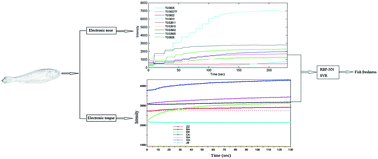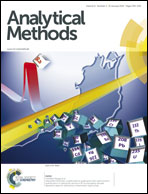Nondestructive detection of fish freshness during its preservation by combining electronic nose and electronic tongue techniques in conjunction with chemometric analysis
Abstract
A new method was developed to detect fish freshness nondestructively by combining electronic nose (E-nose) and electronic tongue (E-tongue) in conjunction with chemometric methods. An E-nose with nine metal oxide semiconductor gas sensors and a commercial E-tongue were employed in this research. Pseudosciaena crocea stored at 4 °C for different days were used as experimental samples. Total viable counts (TVC) of the fish were detected by the conventional method. E-nose and E-tongue data were analyzed by principal component analysis. Three-layer radial basis function neural network (RBF-NN) models were established for qualitative discrimination of the fish freshness. Performances of RBF-NN models with different numbers of principal components (PCs) as the input were compared. Experimental results revealed that the best RBF-NN model was acquired at seven PCs of E-nose data with an optimal performance of 87.9% and 80.0% in the training set and prediction set respectively. While, the best RBF-NN model of E-tongue data analysis was at five PCs with an optimal performance of 86.3% in the training set and 81.8% in prediction set. Another RBF-NN model was built with the combination of E-nose and E-tongue. The result shows that the discrimination rates improved to 94.0% and 93.9% in the training set and prediction set respectively. A support vector machine regression model was applied to establish a relationship between the combined data from E-nose and E-tongue and from TVC values for quantitative determination. A high correlation was found between the merged data and the parameter of TVC with correlation coefficients more than 0.91. The results proved that, a single system of E-nose and E-tongue was enough to classify samples stored on different days at 4 °C, while a higher discrimination rate was acquired by the combination of the two sensors. The combined system could also be used to quantitatively evaluate the fish freshness. In conclusion, the combined system of E-nose and E-tongue in conjunction with appropriate chemometric analysis methods can conveniently and nondestructively evaluate the freshness of fish stored at 4 °C.


 Please wait while we load your content...
Please wait while we load your content...